Fragments of a Faith Forgotten
The Art of Harry Smith
04 Oct 2023 - 28 Jan 2024
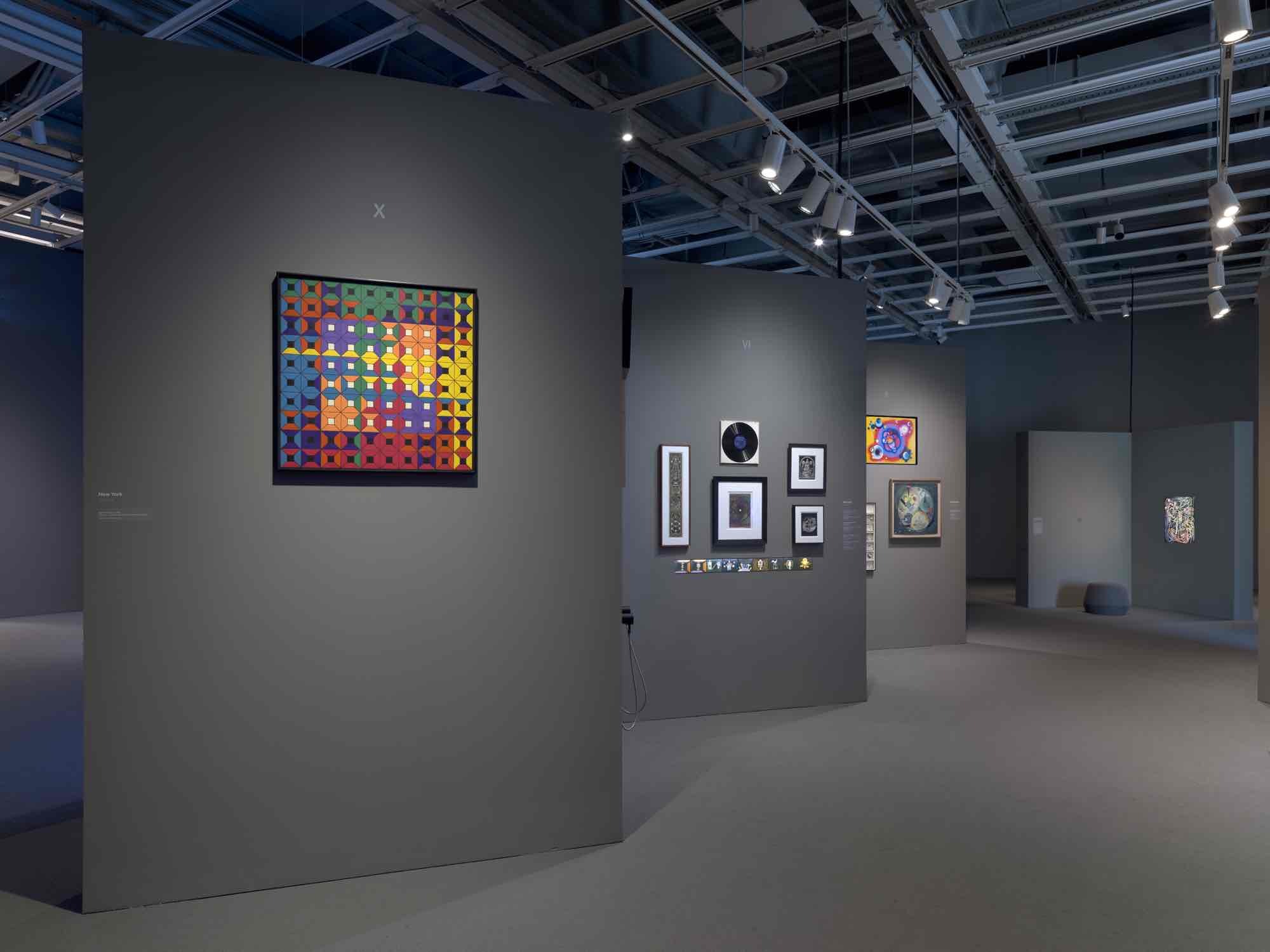
Installation view of Fragments of a Faith Forgotten: The Art of Harry Smith (Whitney
Museum of American Art, New York, October 4, 2023-January 28, 2024). From left to right: Enochian Tablet, c. 1979; Harry Smith for Inkweed Studios, The Tree of Life in the Four Worlds, 1953; Film No.10, 1956; Untitled, c. 1951; Rabbi Naftali Zvi Margolies Abulafia, Prayers and Chants sung by Rabbi Naftuli Zvi Margolies (Folkways Records, 1954); Harry Smith for Inkweed Studios, Untitled [Study for Inkweed Studios greeting card], c. 1952; Harry Smith for Inkweed Studios, Untitled
[Zodiacal hexagram scratchboard], c. 1952; Film No. 9 [depicts the visual plan of a sequence of what is now known as Film No. 7], c. 1950–1951; Untitled, c. 1950–51; Stereo card drawings, c. 1949–50; Manteca [Jazz Painting], c. 1948–49. Photograph by Ron Amstutz
Museum of American Art, New York, October 4, 2023-January 28, 2024). From left to right: Enochian Tablet, c. 1979; Harry Smith for Inkweed Studios, The Tree of Life in the Four Worlds, 1953; Film No.10, 1956; Untitled, c. 1951; Rabbi Naftali Zvi Margolies Abulafia, Prayers and Chants sung by Rabbi Naftuli Zvi Margolies (Folkways Records, 1954); Harry Smith for Inkweed Studios, Untitled [Study for Inkweed Studios greeting card], c. 1952; Harry Smith for Inkweed Studios, Untitled
[Zodiacal hexagram scratchboard], c. 1952; Film No. 9 [depicts the visual plan of a sequence of what is now known as Film No. 7], c. 1950–1951; Untitled, c. 1950–51; Stereo card drawings, c. 1949–50; Manteca [Jazz Painting], c. 1948–49. Photograph by Ron Amstutz

Installation view of Fragments of a Faith Forgotten: The Art of Harry Smith (Whitney
Museum of American Art, New York, October 4, 2023-January 28, 2024). From left to right: Moran Lee “Dock” Boggs, Sugar Baby, 1927; Moran Lee “Dock” Boggs, Pretty Polly, 1927; Musical score: Chief Vincent Jack of Point Grey Musquim,
"Clean-up Day," Swinomish reservation smokehouse, February 14-15, 1942 (1-A-1 1-A-2), 1942; String figure made by Joe Billy, Swinomish, n.d. (printed 1942); Julius Charles working on Gill net, Lummi, n.d. (printed 1942); Drum owned by
Charley Edwards, Swinomish, n.d. (printed 1942); Harry Smith for Qor Corporation, Design for Qor Corporation, c. 1960; Film No.14: Late Superimpositions, 1964; String figure, 1960; String figure, 1960; String figure, 1960; String figure, 1960; String figures, illustrations, and notes, c. 1970; Aleph, c. 1953; Untitled [1048], 1951; Untitled, c. 1951; Untitled [1052], c. 1951; Abstract film studies (two slides projected alternately), 1951; Untitled, 1951; Stereo card drawings, c. 1949-50; Film No. 9, c. 1950-51; Untitled, c. 1950-51; Film No.18: Mahagonny, 1970–80 (restored 2002). Photograph by Ron Amstutz
Museum of American Art, New York, October 4, 2023-January 28, 2024). From left to right: Moran Lee “Dock” Boggs, Sugar Baby, 1927; Moran Lee “Dock” Boggs, Pretty Polly, 1927; Musical score: Chief Vincent Jack of Point Grey Musquim,
"Clean-up Day," Swinomish reservation smokehouse, February 14-15, 1942 (1-A-1 1-A-2), 1942; String figure made by Joe Billy, Swinomish, n.d. (printed 1942); Julius Charles working on Gill net, Lummi, n.d. (printed 1942); Drum owned by
Charley Edwards, Swinomish, n.d. (printed 1942); Harry Smith for Qor Corporation, Design for Qor Corporation, c. 1960; Film No.14: Late Superimpositions, 1964; String figure, 1960; String figure, 1960; String figure, 1960; String figure, 1960; String figures, illustrations, and notes, c. 1970; Aleph, c. 1953; Untitled [1048], 1951; Untitled, c. 1951; Untitled [1052], c. 1951; Abstract film studies (two slides projected alternately), 1951; Untitled, 1951; Stereo card drawings, c. 1949-50; Film No. 9, c. 1950-51; Untitled, c. 1950-51; Film No.18: Mahagonny, 1970–80 (restored 2002). Photograph by Ron Amstutz

Installation view of Fragments of a Faith Forgotten: The Art of Harry Smith (Whitney
Museum of American Art, New York, October 4, 2023-January 28, 2024). From left to right, top to bottom: Algo Bueno [Jazz Painting], c. 1948–49; Moran Lee “Dock” Boggs, Sugar Baby, 1927; Moran Lee “Dock” Boggs, Pretty Polly, 1927; Musical score: Chief Vincent Jack of Point Grey Musquim, "Clean-up Day," Swinomish reservation smokehouse, February 14-15, 1942 (1-A-1, 1-A-2), 1942; String figure made by Joe Billy, Swinomish, n.d. (printed 1942); Julius Charles working on Gill net, Lummi, n.d. (printed 1942); Drum owned by Charley Edwards, Swinomish,
n.d. (printed 1942); Film No. 15 (Untitled animation of Seminole patchwork patterns), c. 1965–66; Film No.18: Mahagonny, 1970–80 (restored 2002). Photograph by Ron Amstutz
Museum of American Art, New York, October 4, 2023-January 28, 2024). From left to right, top to bottom: Algo Bueno [Jazz Painting], c. 1948–49; Moran Lee “Dock” Boggs, Sugar Baby, 1927; Moran Lee “Dock” Boggs, Pretty Polly, 1927; Musical score: Chief Vincent Jack of Point Grey Musquim, "Clean-up Day," Swinomish reservation smokehouse, February 14-15, 1942 (1-A-1, 1-A-2), 1942; String figure made by Joe Billy, Swinomish, n.d. (printed 1942); Julius Charles working on Gill net, Lummi, n.d. (printed 1942); Drum owned by Charley Edwards, Swinomish,
n.d. (printed 1942); Film No. 15 (Untitled animation of Seminole patchwork patterns), c. 1965–66; Film No.18: Mahagonny, 1970–80 (restored 2002). Photograph by Ron Amstutz
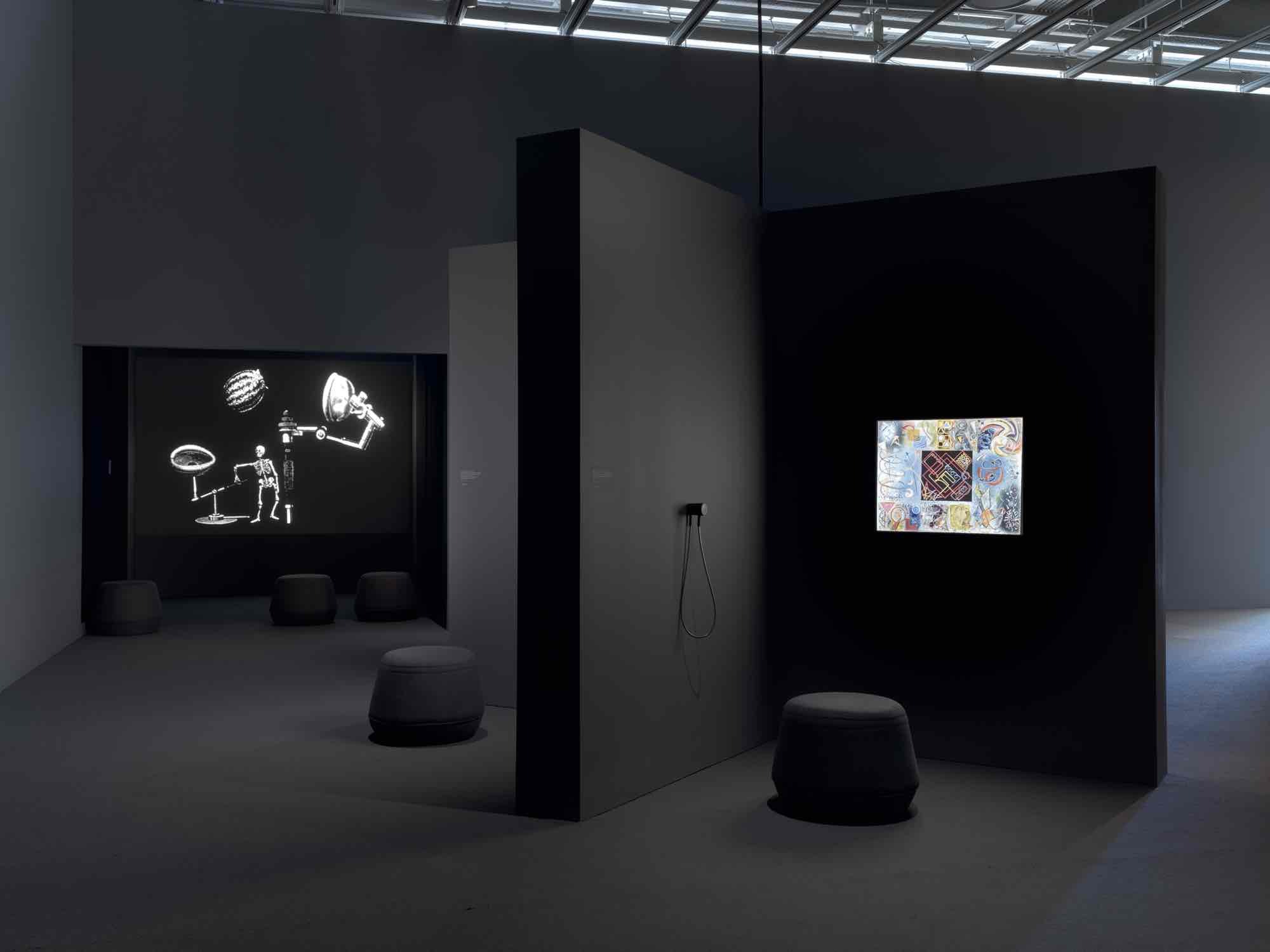
Installation view of Fragments of a Faith Forgotten: The Art of Harry Smith (Whitney
Museum of American Art, New York, October 4, 2023-January 28, 2024). From left to right: Film No.12: Heaven and Earth Magic Feature, c. 1957–62; Algo Bueno [Jazz Painting], c. 1948–49. Photograph by Ron Amstutz
Museum of American Art, New York, October 4, 2023-January 28, 2024). From left to right: Film No.12: Heaven and Earth Magic Feature, c. 1957–62; Algo Bueno [Jazz Painting], c. 1948–49. Photograph by Ron Amstutz
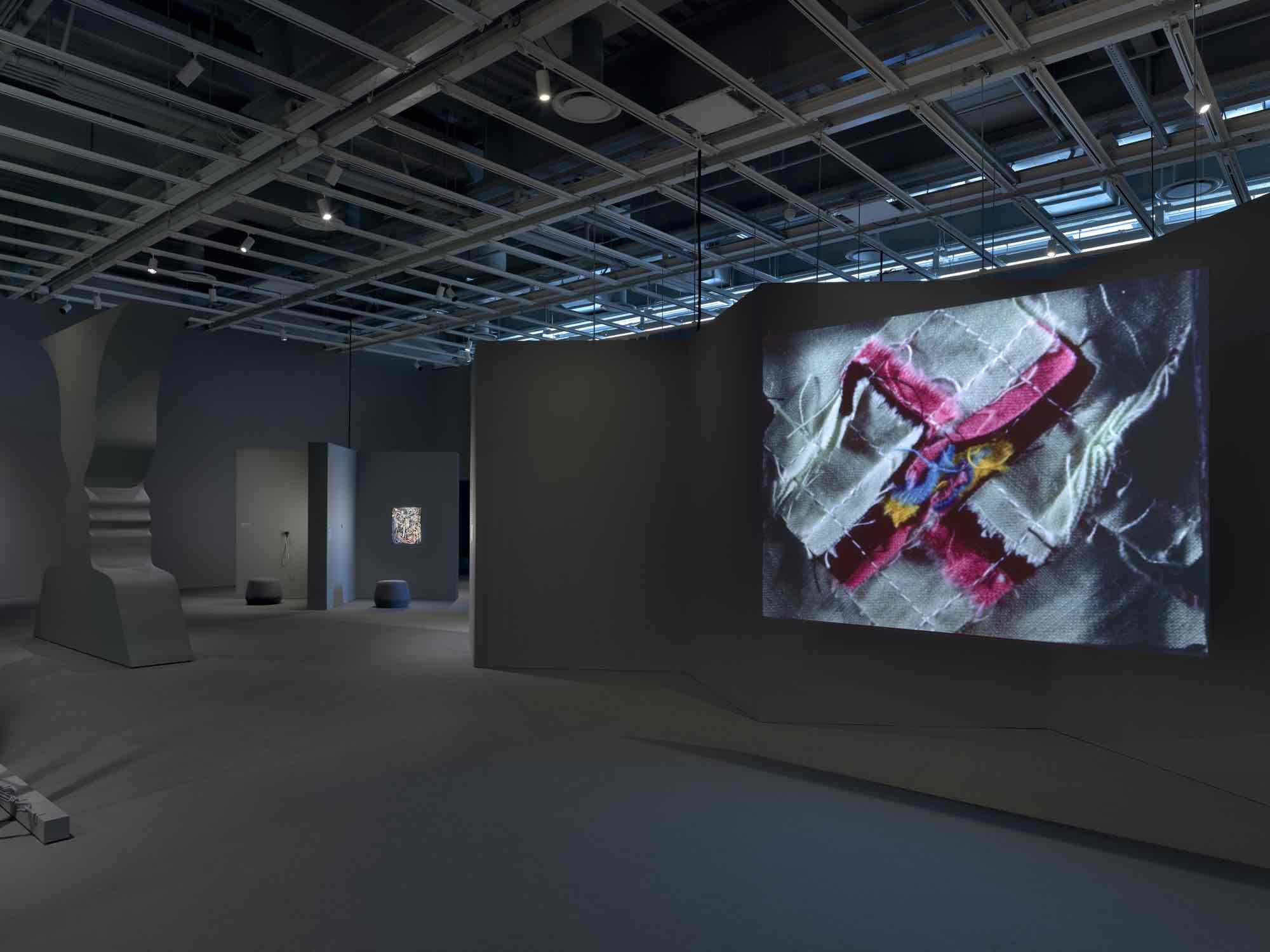
Installation view of Fragments of a Faith Forgotten: The Art of Harry Smith (Whitney
Museum of American Art, New York, October 4, 2023-January 28, 2024). From left to right: Manteca [Jazz Painting], c. 1948–49; Film No. 15 (Untitled animation of Seminole patchwork patterns), c. 1965–66. Photograph by Ron Amstutz
Museum of American Art, New York, October 4, 2023-January 28, 2024). From left to right: Manteca [Jazz Painting], c. 1948–49; Film No. 15 (Untitled animation of Seminole patchwork patterns), c. 1965–66. Photograph by Ron Amstutz
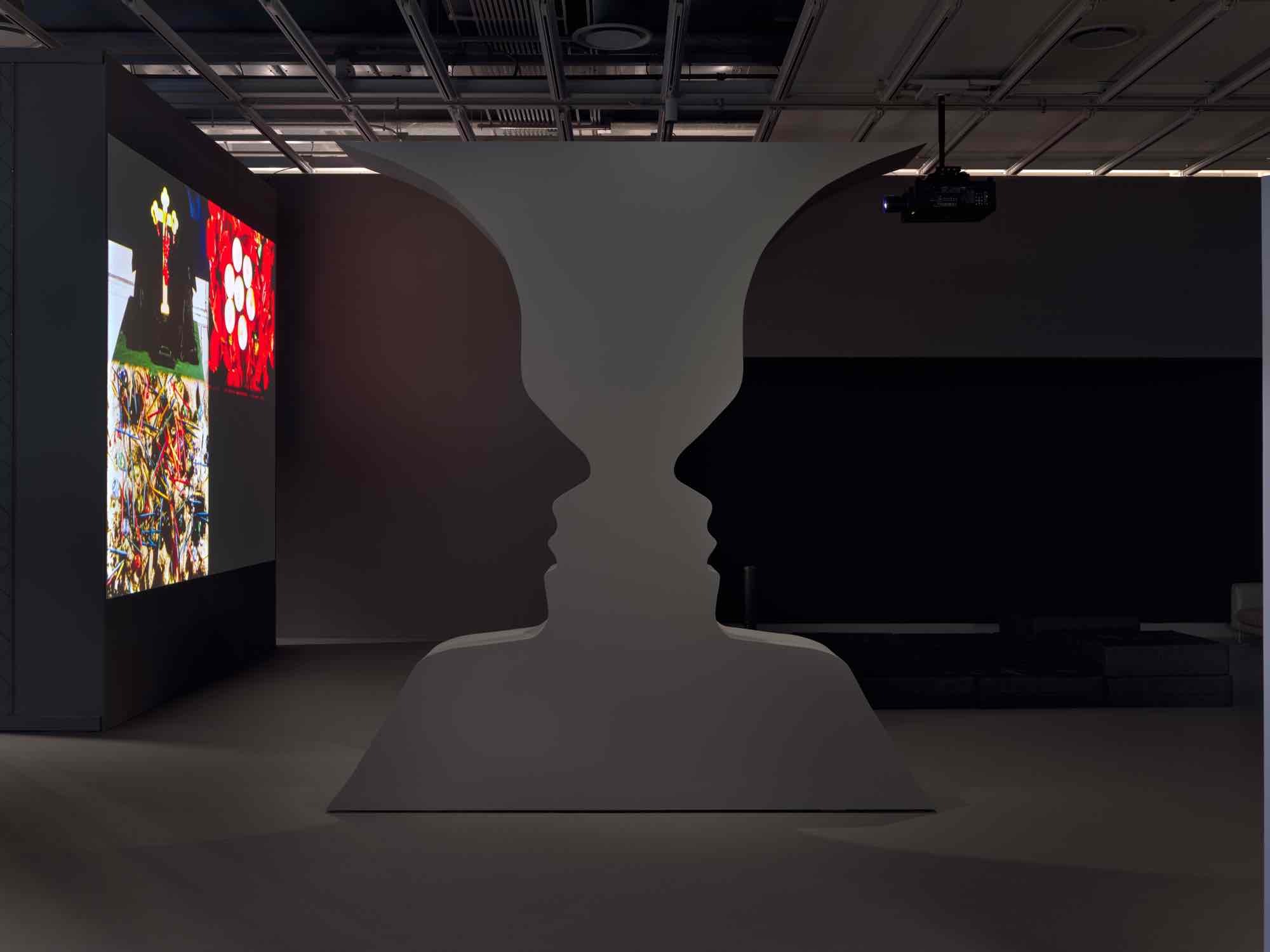
Installation view of Fragments of a Faith Forgotten: The Art of Harry Smith (Whitney
Museum of American Art, New York, October 4, 2023-January 28, 2024). Film No.18: Mahagonny, 1970–80 (restored 2002). Photograph by Ron Amstutz
Museum of American Art, New York, October 4, 2023-January 28, 2024). Film No.18: Mahagonny, 1970–80 (restored 2002). Photograph by Ron Amstutz
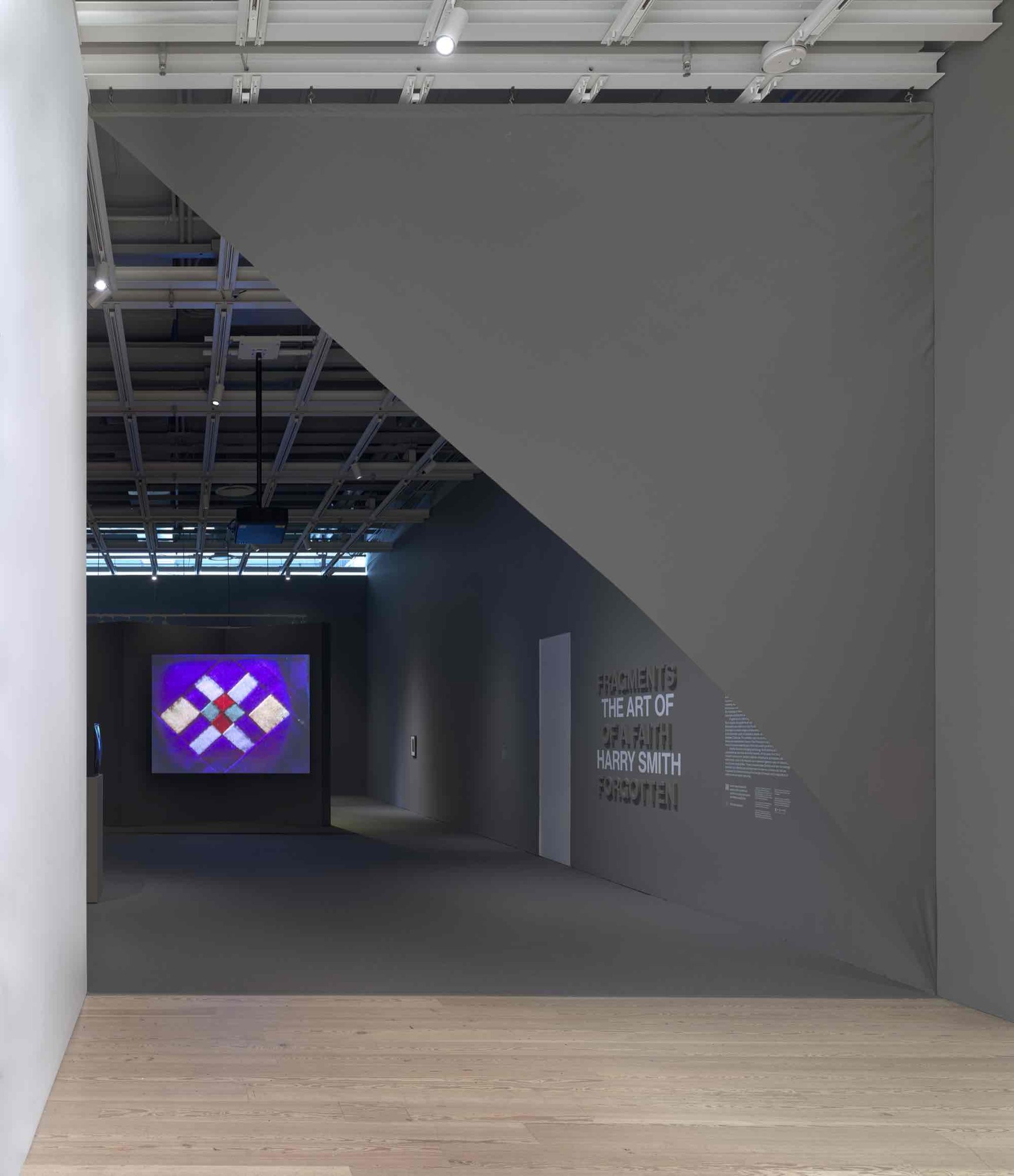
Installation view of Fragments of a Faith Forgotten: The Art of Harry Smith (Whitney
Museum of American Art, New York, October 4, 2023-January 28, 2024). Film No. 15 (Untitled animation of Seminole patchwork patterns), c. 1965–66. Photograph by Ron Amstutz
Museum of American Art, New York, October 4, 2023-January 28, 2024). Film No. 15 (Untitled animation of Seminole patchwork patterns), c. 1965–66. Photograph by Ron Amstutz
Fragments of a Faith Forgotten: The Art of Harry Smith is the first solo exhibition of artist, experimental filmmaker, and groundbreaking musicologist Harry Smith (1923–1991), whose compendium of song recordings, the Anthology of American Folk Music, laid the groundwork for the popularization of folk music in the 1960s. This major exhibition introduces Smith’s life and work within a museum setting for the first time and includes paintings, drawings, experimental films, designs, and examples of Smith’s collections of objects ranging from string figures to found paper airplanes. Seen throughout this hybrid display of art and ephemera are signs of the esoteric, fantastic, and alternative cosmologies basic to Smith’s view of culture. The exhibition proposes new ways to experience diverse strains of 20th-century American cultural histories.
Over the course of fifty years, Smith made renegade and innovative use of the changing recording and distribution technologies, from his voracious approach to record collecting to experiments with early tape-recording systems to groundbreaking manipulations of abstraction and collage in film. Smith was an innovator in collecting, organizing, and sequencing images and artifacts that structure the ways we understand and share culture and experiences today. He created a life and practice largely outside of institutions and capitalism, offering an eccentric model for engagement with a society today even further dominated by these systems. Vitally, Smith brought to light and wrestled with—sometimes imperfectly—facets of America’s rich histories, tracing and sharing underappreciated veins of culture often invisible to mainstream society. Very much outside of his time, Smith nonetheless created his own rich vein of American culture that says more about this country, its arts, and its diverse creative communities than nearly any other artist of his time.
The exhibition, designed in partnership with artist Carol Bove, distills his remarkable and varied production into a number of distinct sculptural spaces. Smith’s early hand-painted abstract films, his film of Seminole textiles, and Andy Warhol’s Screen Test of Smith will be presented alongside stills from the liner notes of the Anthology of American Folk Music (1952). The exhibition will zig-zag through displays of Smith’s personal collection of ephemera and archival materials to survey the artist’s life. The artist’s rarely seen film Mahagonny (1970–80) creates a portrait of urban America with a mesmerizing, hectic, and repetitive showcase of four films presented simultaneously while an original score from the Brecht-Weill opera Rise and Fall of the City of Mahagonny (1930) plays at high volume. A small black box theater will immerse visitors in Smith’s collage film Heaven and Earth Magic Feature (c. 1957–62). Finally, this exhibition will offer a unique listening environment where visitors can explore the Anthology of American Folk Music.
The exhibition is curated by artist Carol Bove; Dan Byers, the John R. and Barbara Robinson Director of the Carpenter Center for the Visual Arts; Rani Singh, Director of the Harry Smith Archives; Elisabeth Sussman, Curator at the Whitney Museum of American Art; with Kelly Long, Senior Curatorial Assistant, and McClain Groff, Curatorial Project Assistant, at the Whitney Museum of American Art.
Over the course of fifty years, Smith made renegade and innovative use of the changing recording and distribution technologies, from his voracious approach to record collecting to experiments with early tape-recording systems to groundbreaking manipulations of abstraction and collage in film. Smith was an innovator in collecting, organizing, and sequencing images and artifacts that structure the ways we understand and share culture and experiences today. He created a life and practice largely outside of institutions and capitalism, offering an eccentric model for engagement with a society today even further dominated by these systems. Vitally, Smith brought to light and wrestled with—sometimes imperfectly—facets of America’s rich histories, tracing and sharing underappreciated veins of culture often invisible to mainstream society. Very much outside of his time, Smith nonetheless created his own rich vein of American culture that says more about this country, its arts, and its diverse creative communities than nearly any other artist of his time.
The exhibition, designed in partnership with artist Carol Bove, distills his remarkable and varied production into a number of distinct sculptural spaces. Smith’s early hand-painted abstract films, his film of Seminole textiles, and Andy Warhol’s Screen Test of Smith will be presented alongside stills from the liner notes of the Anthology of American Folk Music (1952). The exhibition will zig-zag through displays of Smith’s personal collection of ephemera and archival materials to survey the artist’s life. The artist’s rarely seen film Mahagonny (1970–80) creates a portrait of urban America with a mesmerizing, hectic, and repetitive showcase of four films presented simultaneously while an original score from the Brecht-Weill opera Rise and Fall of the City of Mahagonny (1930) plays at high volume. A small black box theater will immerse visitors in Smith’s collage film Heaven and Earth Magic Feature (c. 1957–62). Finally, this exhibition will offer a unique listening environment where visitors can explore the Anthology of American Folk Music.
The exhibition is curated by artist Carol Bove; Dan Byers, the John R. and Barbara Robinson Director of the Carpenter Center for the Visual Arts; Rani Singh, Director of the Harry Smith Archives; Elisabeth Sussman, Curator at the Whitney Museum of American Art; with Kelly Long, Senior Curatorial Assistant, and McClain Groff, Curatorial Project Assistant, at the Whitney Museum of American Art.
